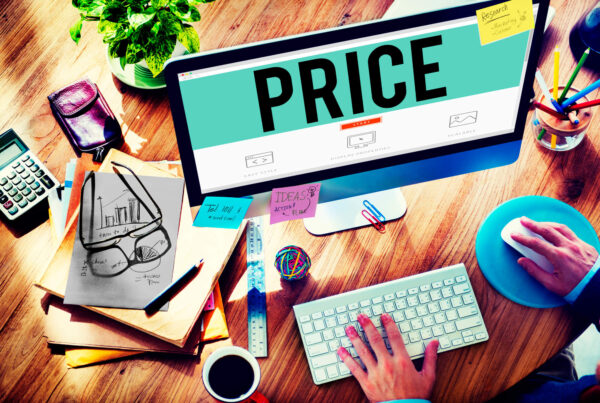Last Updated on March 6, 2024 by Dave Schoenbeck
When you sell on price, that’s the only selling point people will focus on. They may want the “deal of a century” or feel they are not being exploited. Value selling removes the function of the price tag since the consumer’s lives will so clearly become better than ever before. The software or automation will eliminate manual labor, and the product will reduce excessive injuries, the service will help a team function at a higher level, and so on.
There are three ways to increase revenue: product/services, cut costs or raise current prices. However, when you remove price from the selling conversation and only focus on value selling, you and your customers have an elevated level of trust, and everyone wins — price is secondary to value. Read on to learn more about shifting from selling to value.
What is Value Selling?
Value-based selling is not learned overnight. Value is the trade-off between the perceived benefits derived from your product or solution and the price the client is willing to pay.
Building Value in Sales
Building value often begins with storytelling. Walk clients through scenarios where previous clients saw the benefit of working with you in holistic (and financial) ways. For example, spending $1 now to save $2 later is a form of future-proofing. But if they know you are there in the future — far after the initial transaction — that can go a long way.
Why build value in sales:
- Produces customer delight, which creates more loyalty and a wider moat
- Value establishes a point of differentiation from competitors
- Builds a longer and stickier relationship
- Enhances your brand reputation
- Value gives you more substantial margins — you’ll likely sell to fewer clients but earn more in the long run.
The value over price removes the cost discussion and saves that for the end. The goal isn’t to trick them or make anyone feel like they’ve wasted time. It’s the opposite. You are spending time discussing the aspects of their business or process that must be addressed. Then, when you know the “why,” you can show the “how.”
Value selling methodology is simple once you understand how to share the value rather than share the pricing. Warren Buffet once said, “Price is what you pay. Value is what you get.”
Value Selling Tips
When you sell value, the cost is secondary. However, it’s hard to sell value when you’re selling a commodity — think of coffee (Starbucks), fast fashion (Zara), and even cars.
Value selling can include a variety of methods, but it always answers the following:
- What specific needs does your customer need to fulfill?
- How can you help your customer meet these objectives?
- Why does it matter to the customer and you?
Try these value-selling tips:
- Active listening – Focus on the value that matters to the buyer, not you.
- Testimonials – Help them visualize their lives improved in some way thanks to your solution or product.
- Value-add – They won’t derive value only from your answer but should derive value from your relationships.
- Negotiate on value – If they want to spend less, offer them a solution where they derive less value.
Ultimately, you deserve to make money in your business through every phase of the process. “Customer stories and case studies are the best way that providers can communicate differentiation that I trust,” according to a Gartner study where 70% of buyers agree.
Sell Results
Why is it important to sell value rather than price? Part of the value selling concept explains what customers will get from working with you or using your product — the results are measurable.
Intelligent salespeople can challenge buyer assumptions while aligning the value proposition with the buyer’s vision. Questions like “How did you arrive at that budget?” or “Who else in the company will use this product or service?” can help you glean insight into the expected results of more than just the buyer — but accounts for the company.
Learning how to sell on value, not price, takes time. However, a business coach can help you learn how to sell in a way that feels organic and allows your customers to see your value. Click here to discuss value selling instead of price with a professional business coach, Dave Schoenbeck.
Coach Dave
- Agonizing Reasons Why We Procrastinate and What You Should Do About It - December 18, 2025
- The Cheat Code for How to Build an Effective Winning Team - December 11, 2025
- A Practical Guide on How to Create a Business Strategy That Works - December 4, 2025



